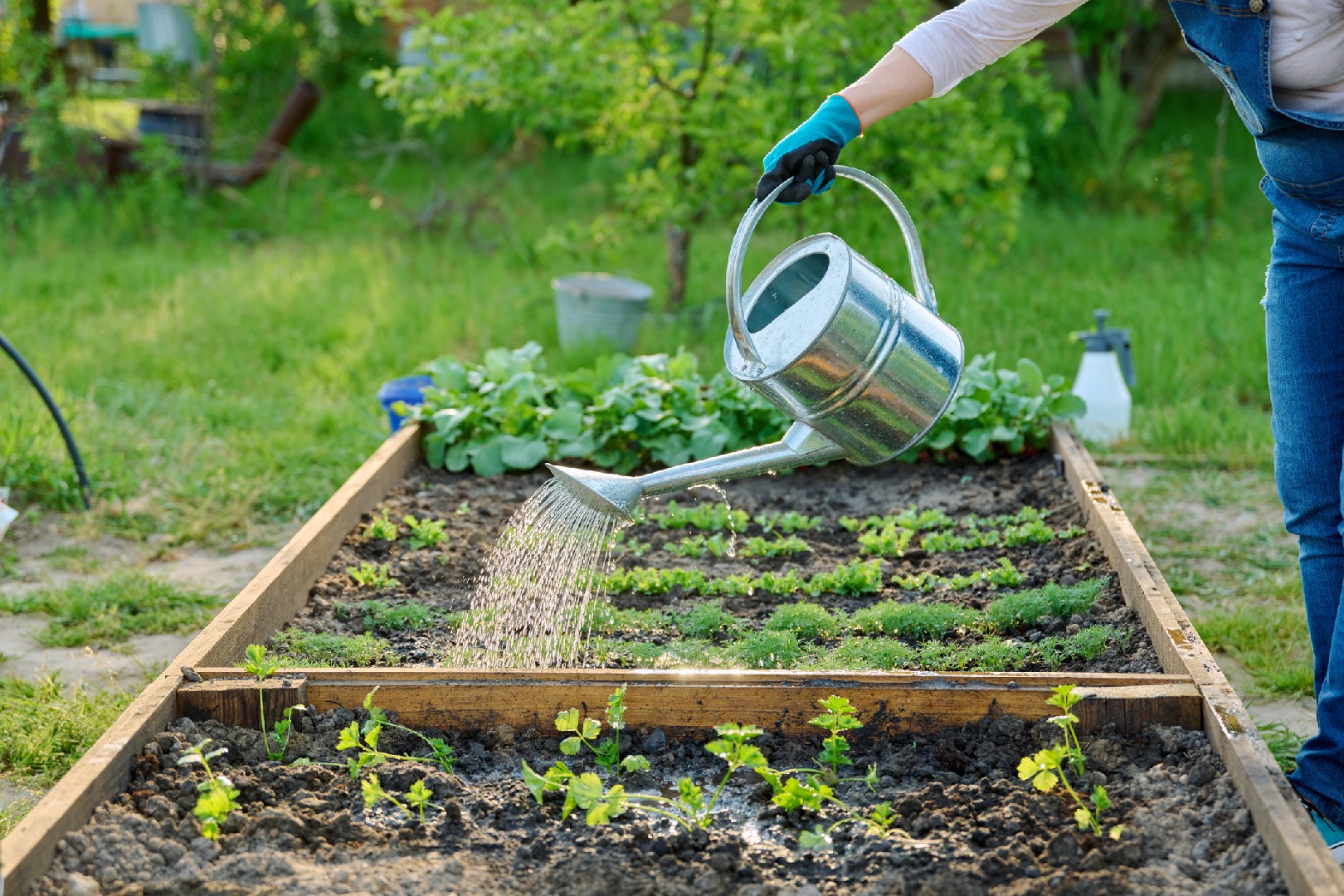![Rectangle]()
Summer: Cultivate and Protect Your Crops
During the summer months, it is crucial to implement proper maintenance and care for your raised beds, ensuring a continuous harvest. In this section, we will discuss key tasks that should be undertaken, such as watering, weeding, fertilizing, and disease/pest control.
Watering is an essential component of summer gardening. The high temperatures can quickly dry out the soil, leading to stressed and unhealthy plants. To maintain soil moisture, it is recommended to water your raised beds deeply and infrequently. This encourages deep root growth, making plants more resilient to drought conditions. One effective method is to use drip irrigation, which provides a slow and steady supply of water directly to the plant's roots. Additionally, mulching around your crops with organic materials, such as straw or wood chips, can help retain moisture and reduce evaporation.
Another critical aspect of summer maintenance is weed control. Weeds not only compete with your crops for nutrients and water but also provide hiding places for pests. To prevent weed growth, regularly inspect your raised beds and remove any emerging weeds promptly. Applying mulch can act as a barrier, inhibiting weed germination and growth. Additionally, consider using organic weed control methods, such as hand-pulling or using a hoe, to minimize the use of harmful chemicals.
Fertilizing your plants is essential during the summer months when they are actively growing and producing. Organic fertilizers, such as compost or well-rotted manure, can be applied to your raised beds to provide a slow release of nutrients. Alternatively, you can use natural liquid fertilizers, such as fish emulsion or seaweed extract, to give your plants a nutritional boost. It is recommended to follow the instructions on the fertilizer packaging for proper application rates and timing.
Protecting your crops from diseases and pests is vital to ensure a bountiful harvest. Regularly inspect your plants for signs of disease or pest infestation, such as yellowing leaves, chewed foliage, or stunted growth. If detected early, you can take appropriate measures to prevent further damage. Organic pest control methods, such as introducing beneficial insects or using natural pest repellents, can be effective in managing pest populations. Additionally, practicing crop rotation and maintaining good garden hygiene can help prevent the spread of diseases.
Summer is also a time for harvesting early crops and planning for successive planting. As you harvest your crops, make sure to remove any diseased or pest-infested plants from your raised beds. This prevents the spread of pathogens and provides space for new plants. To extend your harvest season, plan for successive planting by sowing seeds or transplanting seedlings in intervals. This ensures a continuous supply of fresh produce throughout the summer.
By following these summer gardening tasks, you can cultivate healthy and productive crops in your raised beds. Remember to manage soil moisture, control weeds, fertilize appropriately, and protect your plants from disease and pests. With proper care and planning, you can enjoy a continuous harvest from your raised beds all summer long.





